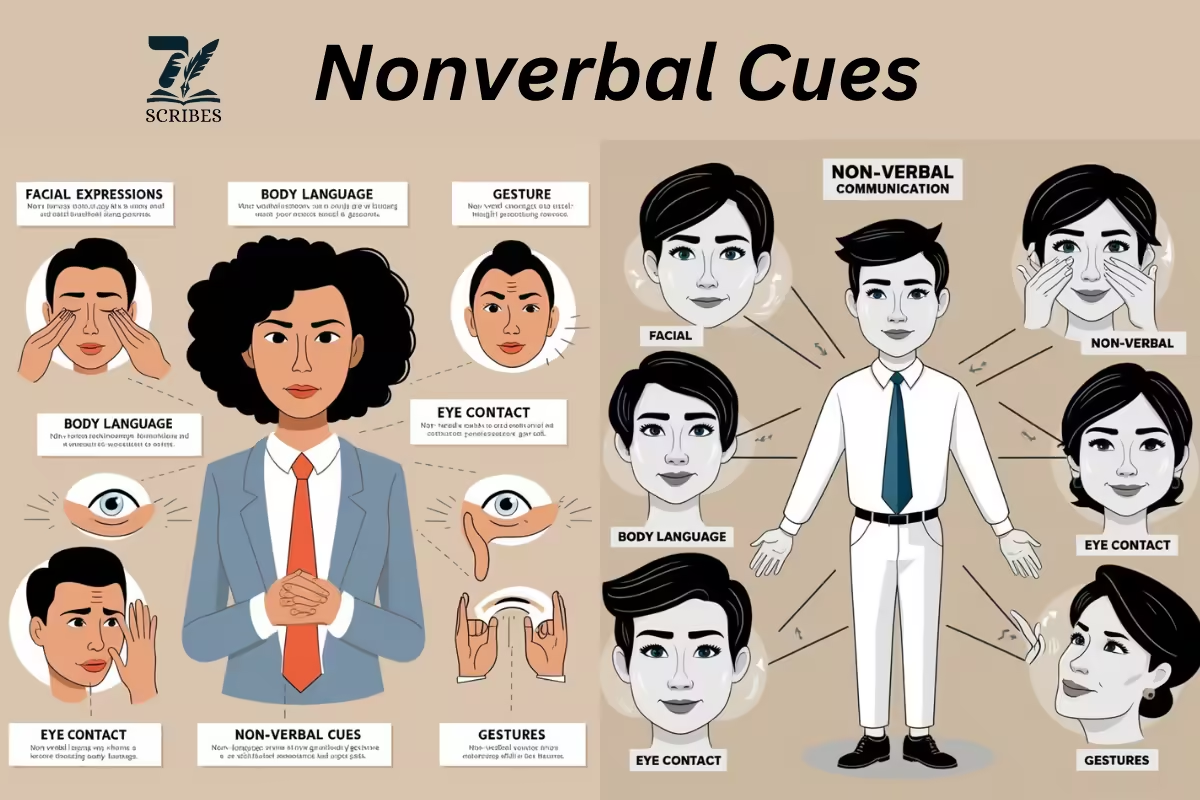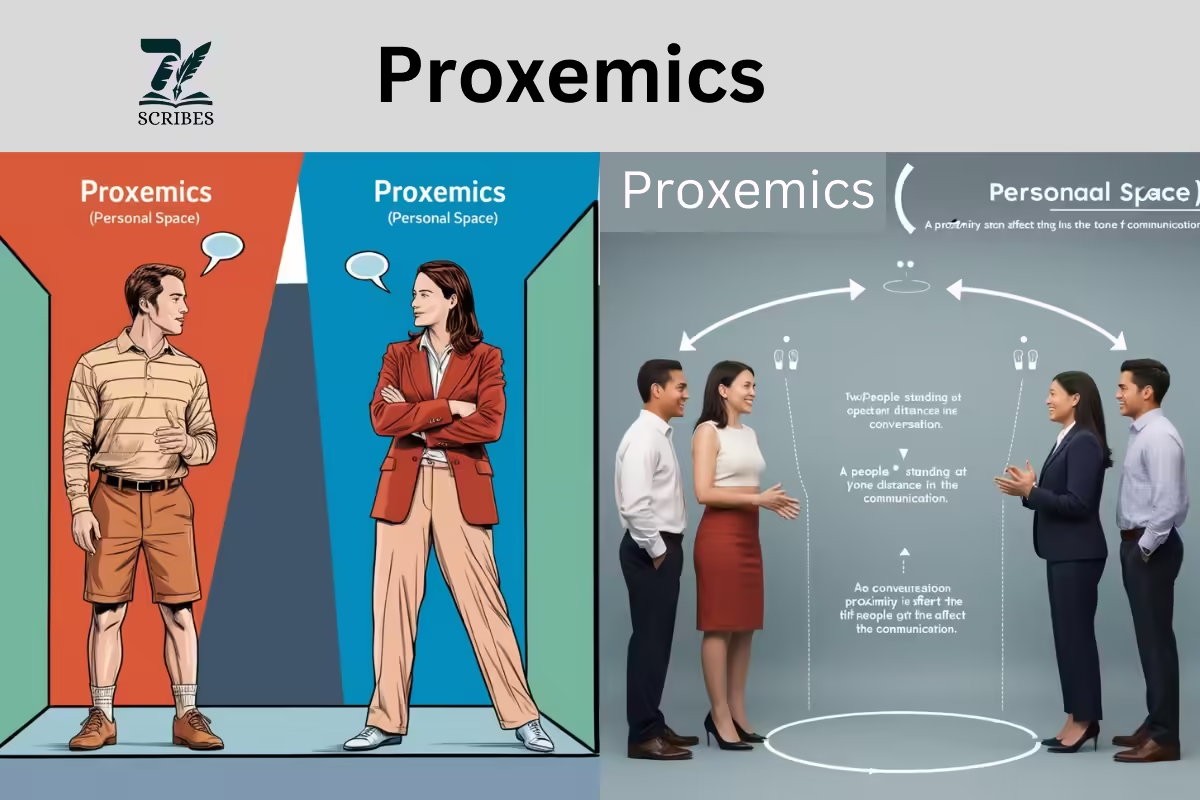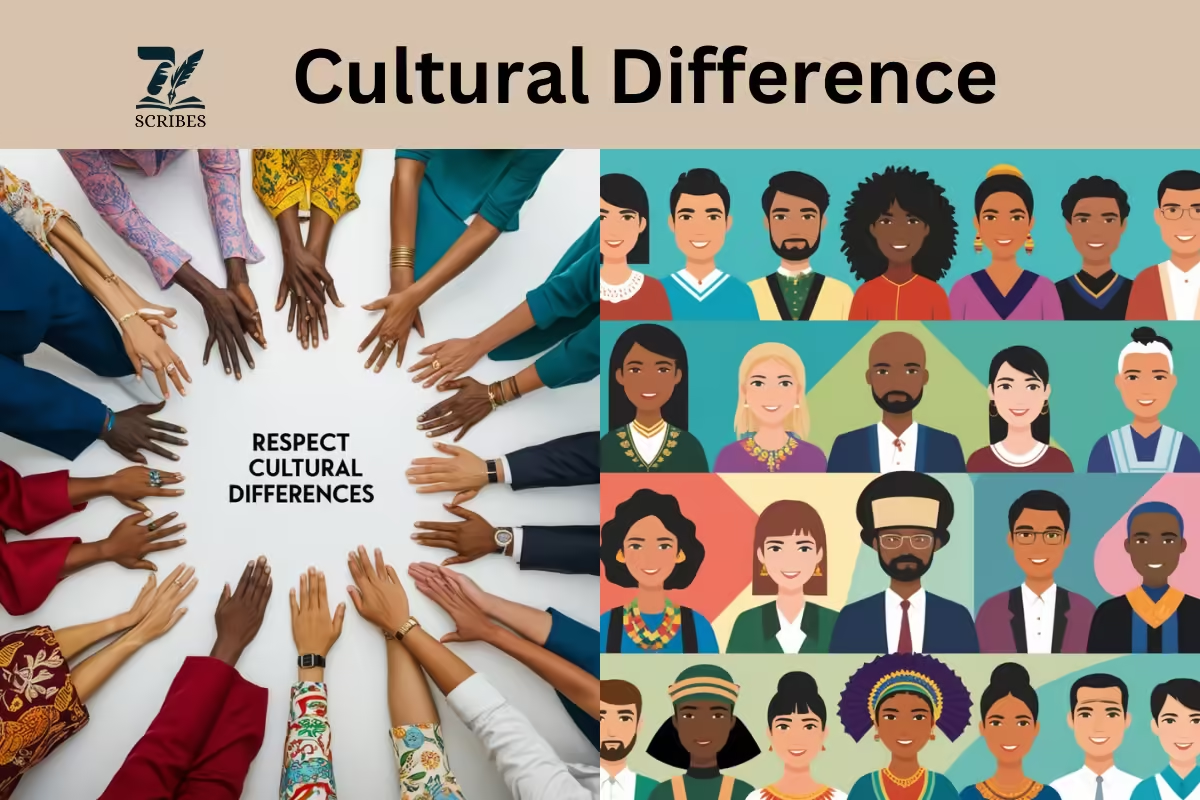Communication is often defined as the transfer of thoughts, ideas, or information through words. However, research shows that most of the communication takes place through non-verbal communication. In contrast with verbal communication, we use different nonverbal cues in nonverbal communication instead of spoken or written words.
What is Nonverbal Communication?
Non-verbal communication is the process of transferring information without using any spoken or written words. In nonverbal communication, we use different nonverbal cues like facial expressions, eye contact, body language, gestures, and tone of voice.

Examples:
Facial Expressions:
There are mixed emotions present on our faces rather than in words. Happiness, anger, sadness, surprise, and fear can be easily discerned through one’s facial expressions.
Body Language:
A posture, gesture, or movement can be a thousand words when it describes emotional states, attitudes, or reactions. For example, defensive behavior is indicated by crossing one’s arms, but opening one’s posture shows one is open and receptive to others.
Eye Contact:
A high level of eye contact helps to create trust and comprehension. Reviewing can suggest concentration, interest, or respect. Adequate eye contact creates rapport, while its absence may communicate a lack of interest or discomfort.
Tone:
The difference in tone, pitch, and pace might completely change what you are trying to say. You might hear someone say something simple, yet his sarcastic tone can make it completely change its meaning, or a warm empathetic tone creates a connection.
Gestures:
The small motion of a hand, head, or body can have a great impact. A wave, a thumbs-up, or a nod-fairly minor could, depending on the situation, convey affirmation, dissent, emotions, and much more.
Proxemics (Personal Space):
The physical distance between people conveys feelings of intimacy, aggression, or formality. Different cultures have different norms about the proper use of personal space.

Touch or Haptics:
Touch can sometimes be warm and amiable, supportive, or assertive. A handshake can indicate friendliness, while a hug or back pat can suggest encouragement or show solidarity.
Appearance:
Our presentation through our dress, grooming, and overall appearance can sometimes convey strong non-verbal messages. In the workplace, a polished look may demonstrate competence and seriousness, while casual dress may indicate a lack of seriousness or even a tendency to relax.
Why nonverbal communication is important?
Non-verbal communication is essential in how we interact with others. It often provides additional clarity, context, and emotional depth to messages. Here are some reasons why non-verbal communication is so important
Communicates emotion and intent:
Words may not necessarily be the true destination; non-verbal communications can indeed follow, although indirectly explicit, to reveal the positive or negative feelings of the sender. For example, the possibility of a person being annoyed or upset might be better communicated by their slumped posture and lack of eye contact when they verbally state they are fine.
Reinforced Verbal Communication:
Non-verbal signs may support or complement the verbal message. A speaker can reinforce his message by nodding to emphasize certain points or by using body language for something else. Whenever the two messages are in good agreement, a stronger message is delivered.
Makes Rapport and Gains Trust:
With the help of these non-verbal expressions, as applied to body language and eye contact, it is established that rapport and trust between the parties are the most important. Individuals tend to feel comfortable only with individuals who display open body language. This could be in the form of leaning forward or holding steady glances.
Cultural Sensitivity:
Nonverbal signs are also culturally sensitive. What may seem polite or friendly in one culture may be taken as rude or unacceptable in another. What is, therefore, more important in international settings is the clarification of the subtleties involved in non-verbal communication in various cultures.
Influence Perception of Others:
Nonverbal communication greatly influences how others think about you. A well-postured person who looks others in the eye and extends a firm handshake is very professional and competent. Avoiding eye contact and having a closed-off posture makes one seem insecure or uninterested.
How to Improve Nonverbal Skills?
Enhancing non-verbal communication skills can improve both personal and professional interactions. Here are some tips to develop these skills:
Be Mindful of Your Body Language:
Pay attention to your posture, gestures, and facial expressions. Ensure you stand tall; avoid crossing your arms, and use gestures to emphasize key points during conversation.
Make Eye Contact:
Aim for natural and comfortable eye contact in conversations. This shows attentiveness and care. Aim for eye contact about 50-60% of the time.

Watch Your Tone of Voice:
Be careful about the tone you are using. A warm tone can make you appear inviting, while a sharp or cold tone will make people fear how it may connect with them. Pay attention to your tone about the context and the message you want to convey.
Observe Others:
Notice how others use non-verbal communication. This will help you notice unspoken cues, such as body language and tone that often go unnoticed if one focuses solely on words.
Respect Cultural Differences:
Be mindful of cultural norms when communicating with individuals from different backgrounds. For instance, some cultures view lower eye contact as respectful, while others see it as a sign of engagement.

Conclusion
Non-verbal communication is absolutely an integral part of human connection. Such communication helps express the emotions that build relationships. Having clear verbal and non-verbal messages. Knowing your non-verbal cues as you display them and increasing your knowledge of others may make you communicate much better in a world where a lot of our communication will be non-verbal if we understand and master the silent messages.
FAQ’s
Q1) What is nonverbal communication?
Nonverbal communication is the transmission of messages without words, using body language, facial expressions, gestures, eye contact, and tone of voice to convey meaning.
Q2) What are 5 nonverbal communocation?
Five types of nonverbal communication are:
Facial Expressions: Convey emotions like happiness, anger, or surprise.
Gestures: Hand or body movements that express ideas or emotions.
Eye Contact: Indicates attention, interest, or honesty.
Posture: Reflects confidence, openness, or defensiveness.
Tone of Voice: Conveys emotions or emphasis through pitch, volume, and speed.
Q3) What are the 3 elements of nonverbal communication?
The three key elements of nonverbal communication are:
Kinesics: Body movements, including gestures, posture, and facial expressions.
Proxemics: Use of personal space and physical distance in interactions.
Paralanguage: Vocal elements like tone, pitch, volume, and rate of speech.